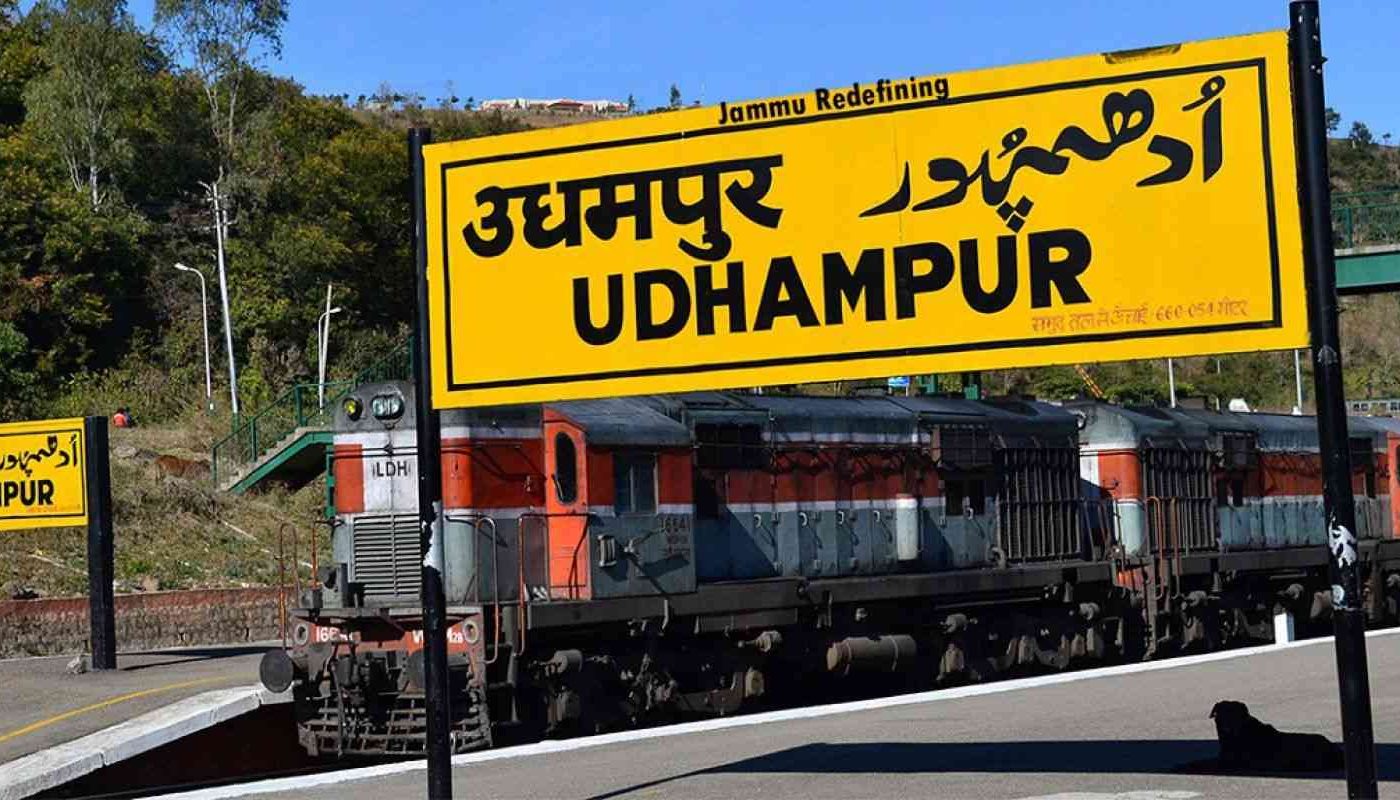Top Tourist Attractions in Udhampur
Udhampur is a city and a municipal committee in the Indian union territory of Jammu and Kashmir’s Udhampur district. It is the district capital and the Indian Army’s Northern Command headquarters, and is named after Raja Udham Singh. The Indian Air Force has a Forward Base Support Unit stationed here as well.
Best Places to Visit in Udhampur
- Shankri Devta
- Moungri Cave
- Sudh Mahadev And Mantalai
- Ramnagar Fort
- Krimachi
- Devika
Shankri Devta Temple
Shankri Devta temple is located on a mound in village Meer, block Panchari, in a picturesque setting surrounded by meadows, steep mountains, and lush green woods. Udhampur town connects Village Meer and Block Headquarter, Panchari by Pucca road. Every year in April/May, the District Administration organises the Shankri Devta Mela. Youth Services and Sports Department, Udhampur organised rural sports competitions such as Kabbadi, Tug of war, and weight lifting events for the entertainment of people as well as to expose the talent of students in culture and games. The district government has made enough plans for drinking water, medical care, power, sanitation, and transportation, among other things. Various departments have set up stalls at the mela location to inform the public about various state and centrally supported government programmes.
Local shopkeepers had also set up impromptu kiosks selling Jalebi, Pakora, bangles, and toys at the site. During the first day of the mela, the J&K Indian Style Wrestling Association, in partnership with the Local Dangal Committee, arranged wrestling tournaments in which prominent wrestlers from various places competed.
Moungri Cave Shrines
Sonara was the old name for the settlement of Moungri. Sonara means “land of a hundred water springs.” Naaras is the Dogri word for a spring of water. According to folklore, it was formerly the home of Nag Devta (King of the Snakes), and hundreds of natural stone-made water springs flowed there. There are still a handful of similar water springs in the region.
An enraged local peasant uncovered a little stone shrine of Lord Shiva, according to another ancient tradition related with the Kansar Shrine. The stone building was removed and thrown into the Kansar stream to eliminate a hindrance in the process of cultivation, agriculture being the livelihood of the local community. But as soon as this was done, disaster struck the defenceless peasants. The shrine was then hurriedly recovered from the rivulet bed, and a temple was built on a neighbouring hilltop by the local people. The temple still exists as a reminder of their efforts.
Moungri Cave Shrines-village Moungri-Sonara-abode of Nag Devta-Panchari Block of District Udhampur-Shri Swatantra Dev Kotwal-Shiv Parvati Cave Shrine-nine and a half feet high naturally formed rock Shiv Lingam-Parvati Lingam-Damroo-Nandi-Shankhas-Amrit Kund-Kansar Shrine
Sudh Mahadev And Mantalai
This highly regarded Shiva temple is 42 kilometres from Patnitop and 112 kilometres from Jammu. Legend has it that after bathing at a spring named Gouri Kund, just short of Sudh Mahadev, the Goddess Parvati would worship the Shivling here, which is thought to be at least 3000 years old. A black marble statue of local Shiva and Parvati is also housed at the shrine. Lord Shiva’s trishul is also kept here. On the full moon night of Sawan, a significant number of pilgrims visit the shrine to participate in the celebration to worship Lord Shiva. The magical underground stream, Devak, which is thought to be as sacred as the Ganges, begins near Sudh Mahadev and vanishes behind the rocks some distance downstream. Locally carved wooden sculptures are also of significance. Tourist Saraj, run by the J&K Tourism Development Corporation, and Dharamshala, controlled by the Dharamarth Trust, both offer lodging.
Mantalai (1450 metres) lies a few kilometres ahead of Sudh Mahadev, surrounded by thick deodar trees. According to mythology, this is the location where Lord Shiva wedded Goddess Parvati. Aside from the Shiv temple, visitors may also see Swami Dhirendra Brhamchari’s complex, which includes a tree-shaped residence, an air strip, a hostel, and a variety of other unfinished projects. An journey through the forests to Naina Devi, 5 kilometres from Mantalai, affords panoramic views of the alpine scenery.
Ramnagar Fort
Ramnagar is located on the left bank of the Kud River in the mid Himalayan range, approximately 40 kilometres west of Udhampur. Ramnagar was also the capital of the former Bandarlta State. It was subject to Sikh ruke and Raja Suchet Singh during the reign of Maharaja Ranjit Singh.
Raja Suchet Singh, who died in 1844, is thought to have erected Ramnagar Fort. Nearby, his wife did sati. At the spot where the sati was conducted, there is a Maharani Samadhi. In 1972, the Archaeological Survey of India undertook a renovation of the fort. The Archaeological Department has designated it as a protected monument.
Krimachi – Group of Temples Krimachi
Krimachi is a tiny hamlet in the Jammu and Kashmir UT district of Udhampur. It is 12 kilometres north of Udhampur on the Udhampur-Lander route and 67 kilometres from Jammu. Five temples and two tiny shrines make up the compound. This valley surrounded by lush mountains is located at a height of 730 metres above mean sea level. This region is drained by two rivulets, “Birunala” and “Krimachi.”
According to local legend, it was formerly a rest stop on the Jammu-Kashmir road through Banihal. According to the contemporaries of the Pandavas from the Mahabharata, he was responsible for laying the foundation of this location. Another version holds that Krimachi was the capital of Bhuti, one of the princes of the Jammu area under the descendants of Daya-Karan, a Kashmiri monarch. The descendants of King Daya- Karan ruled for generations, according to Diwan Narsingh Dass Nargis, and their dynasty was known as the “Bhutials.” According to legend, the final monarch of this dynasty, “Himmat Singh,” was defeated by Maharaja Ranjit Singh, and the Bhuti was eventually ceded to Raja Gulab Singh. As a result, in A.D. 1834, Bhuti was incorporated into the Jammu Kingdom.
The Krimachi temple complex was erected on the upper terrace of Biru Nala.
Devika
Udhampur is also renowned for the Devika River. The Devika river is often regarded as the Ganges’ sister. The Devika River is referenced in the Nilmat Puran, written in the 7th century by Nela Muni, as a manifestation of the mother Goddess Parwati herself to help the inhabitants of Mader Desha, which encompasses lands between the rivers Ravi and Chenab, and the river Devika emerged on Shiv Ratri. Lord Shiva remains side by side with his bride Uma, showing himself in the form of Shiv Lingas at eight locations along the Devika river.
Currently, the river runs beneath its sandy surface. In the Devi Mahatmays, it is stated that there is no need to do Japa or other ceremony in order to gain spiritual benefits at this pilgrimage site; simply touching the Devika waters or bathing in them is enough to obtain spiritual advantages. Water is extracted by excavating a foot into the sand substrate. Cremation on the beaches of Devika is regarded as just as worthy as cremation on the banks of the Ganges at Kashi.
Best Time to Visit in Udhampur
Winter, which begins in October, is regarded to be the finest season to visit Udhampur. While snowfall may be seen in certain sections of the region, the weather in others turns nice and conducive to planning a vacation.
How to Reach Udhampur
BY FLIGHT
There are no frequent flights to Udhampur from other major cities in the nation. Satwari Airport is the closest airport. Satwari Airport (IXJ), Jammu, Jammu & Kashmir, is 65 kilometres from Udhampur. Srinagar Airport (SXR), Srinagar, Jammu & Kashmir is 229 kilometres distant from Udhampur.
BY TRAIN
Regular trains link Udhampur to the rest of the country’s major cities. Udhampur Railway Station
BY BUS
Buses to Udhampur run frequently from all of the country’s main cities. Udhampur has one or more bus stations.

